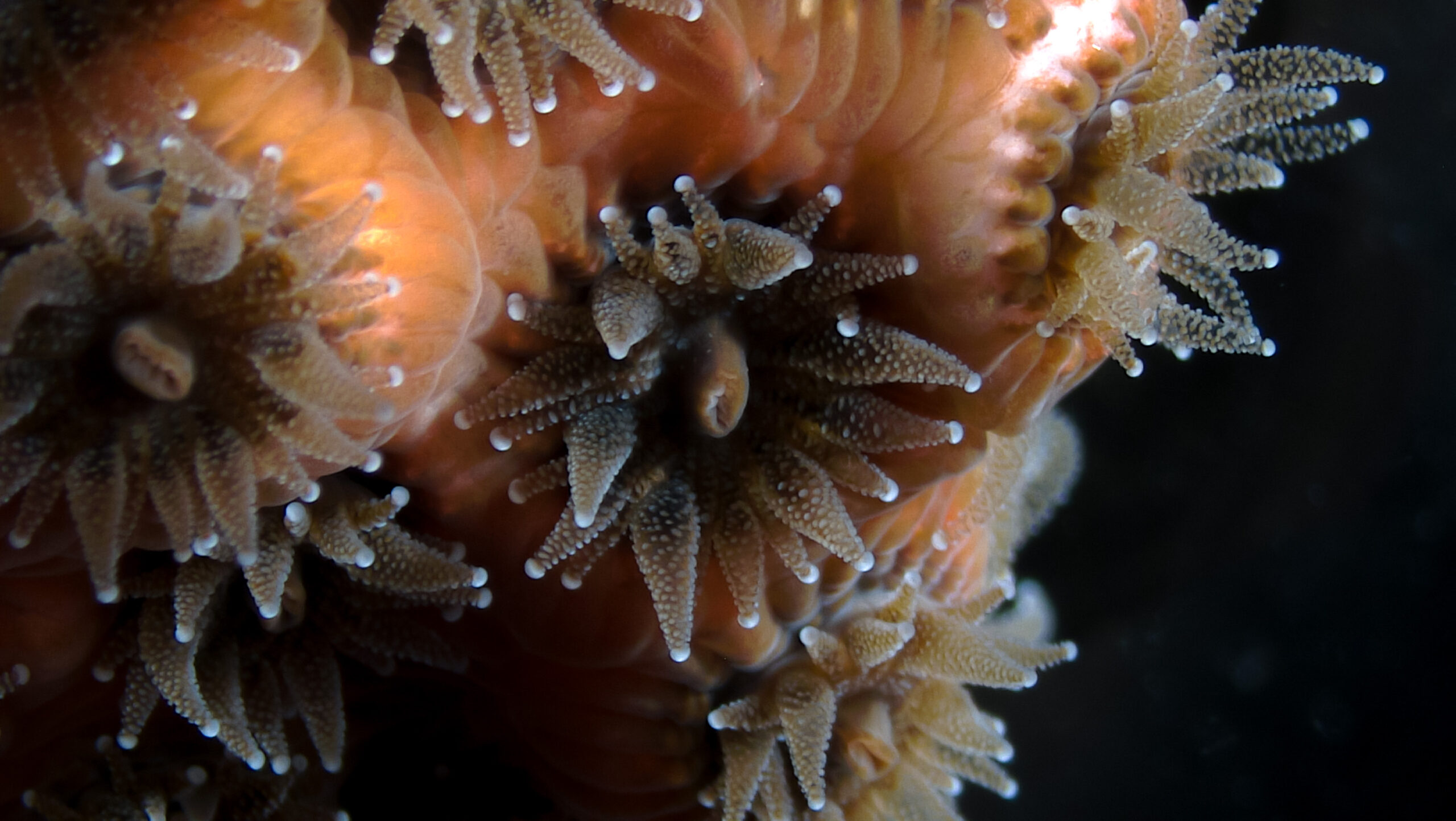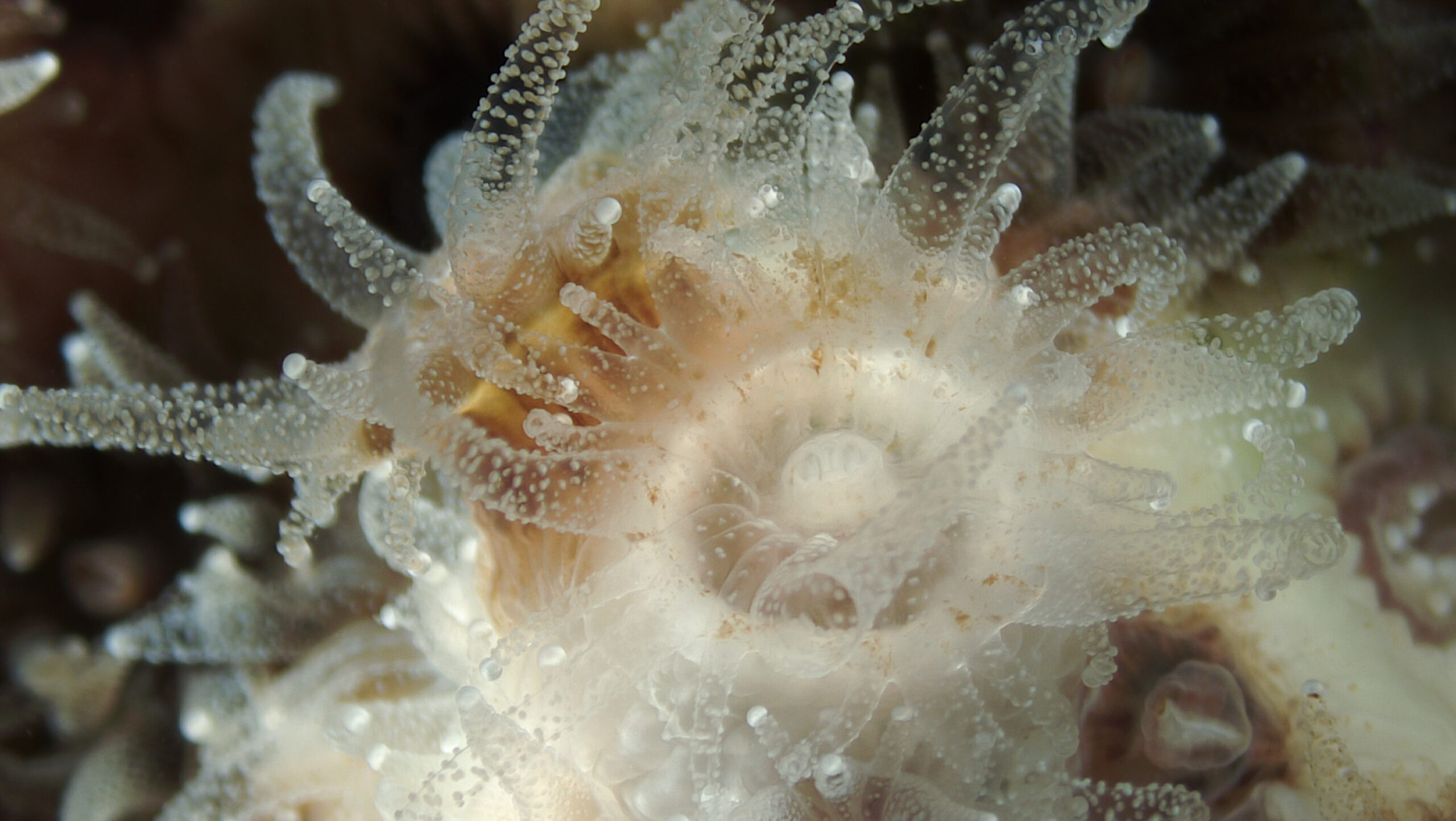A study led by the University of California has found that microbial communities within the Northern Star Coral, Astrangia poculata, shift while it enters dormancy, providing it an important seasonal reset. The work carried out by Assistant Professor Anya Brown may carry implications for coral in warmer waters struggling with climate change and other environmental issues.
“Dormancy, at its most basic, is a response to an environmental stressor — in this case, cold stress,” said Brown, who is part of the UC Davis Bodega Marine Laboratory in the Department of Evolution and Ecology. “If we understand more about this recovery period, it might help us understand what microbes may be responsible for recovering coral in warmer tropical systems.”
The study, published in the journal Applied and Environmental Microbiology with scientists from Woods Hole Oceanographic Institution, or WHOI, and Roger Williams University, is the first to demonstrate a persistent microbial community shift with dormancy, or quiescence, in a marine animal.

Treatments for stressed tropical corals
“This study shows that microbes respond to stress and recover in a predictable pattern,” said co-author Amy Apprill, an associate scientist at WHOI. “It’s foundational knowledge that may help us develop probiotics or other microbial treatments for stressed tropical corals.”
From October 2020 through to March 2021, researchers dove 60 feet (18 meters,) down into cold, nearly 40 degrees Fahrenheit (4 Celsius) water to collect 10 distinct colonies of A. poculata from a dock in Woods Hole, Massachusetts. This coral is found in Atlantic waters extending from the Gulf of Mexico to Massachusetts. As water temperatures cool, the coral retracts its tentacles, stops eating or responding to touch, and goes dormant.
The scientists characterized the microbiomes (communities of microorganisms,) of the wild coral before, during, and after dormancy. They found that while the coral “sleeps,” its microbiome sheds nutrient-loving and pathogen-associated microbes while increasing microbes that may contribute nitrogen while the coral is no longer eating. The scientists found that this restructuring helps the corals maintain their microbial community structure.

Reset and restructure
“We have long hypothesized that Astrangia’s seasonal dormancy allows the coral microbiome to reset and restructure,” said co-author Koty Sharp, associate professor at Roger Williams University. “Our research found evidence for a shuffling during that dormant period that may help us identify microbial associates that are key to coral health and recovery from disturbance.”
“This work opens a lot of questions,” Brown said. “A big one is: Why does the coral wake up in the early spring? This study suggests that key microbial groups may play an important role in triggering the onset of or emergence from this coral’s dormancy and the regulation of its microbiome.”
With companies like AquaBiome unlocking the secrets behind the microbial communities in our reef tanks and scientists researching the effects (and benefits,) of wild coral microbiomes we eagerly await more discoveries in the crucial role that they play in marine ecosystems, both captive and in nature.
The study was funded by a WHOI Postdoctoral Scholar Award to Brown, as well as funding from the National Oceanic and Atmospheric Administration, National Science Foundation, and National Institutes of Health.



